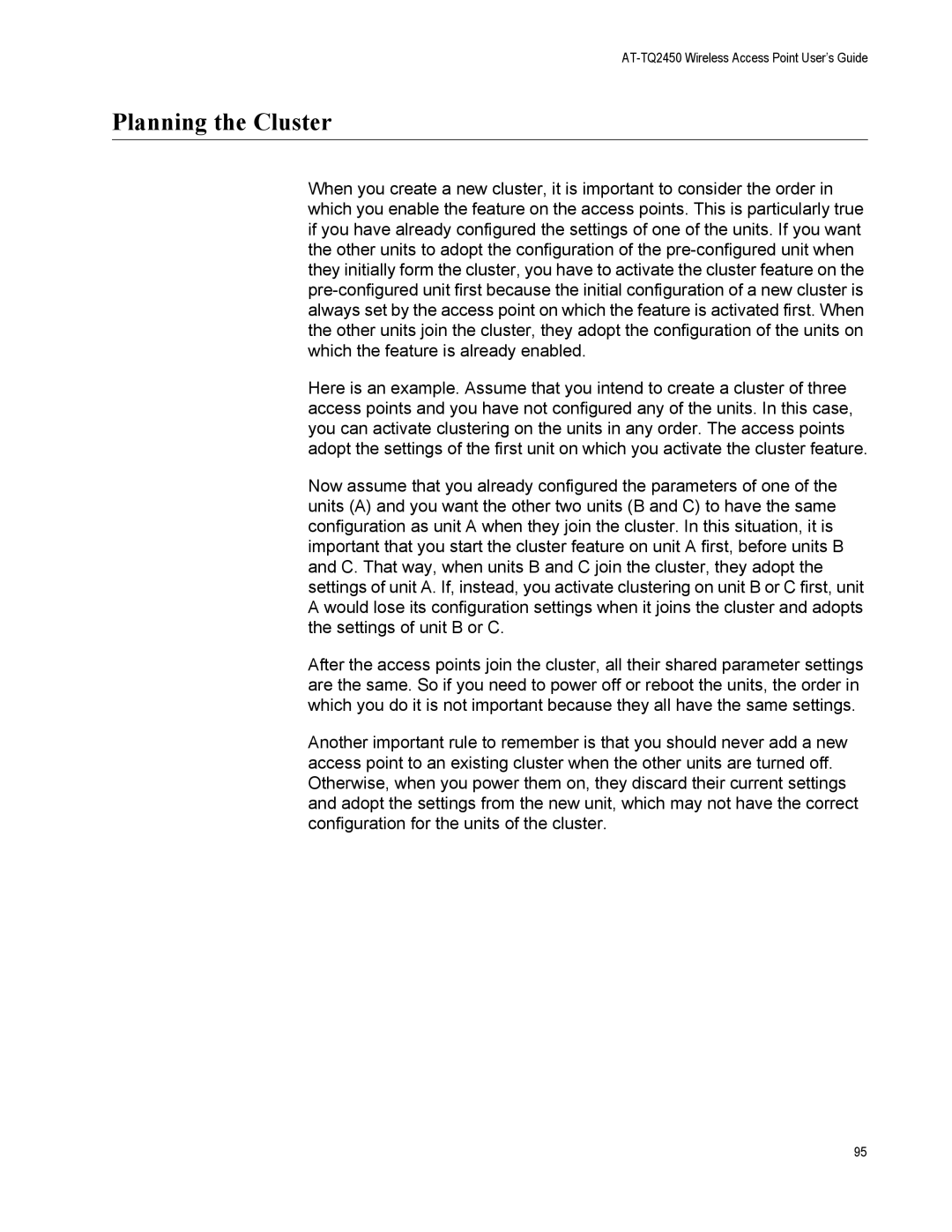AT-TQ2450 Wireless Access Point User’s Guide
Planning the Cluster
When you create a new cluster, it is important to consider the order in which you enable the feature on the access points. This is particularly true if you have already configured the settings of one of the units. If you want the other units to adopt the configuration of the
Here is an example. Assume that you intend to create a cluster of three access points and you have not configured any of the units. In this case, you can activate clustering on the units in any order. The access points adopt the settings of the first unit on which you activate the cluster feature.
Now assume that you already configured the parameters of one of the units (A) and you want the other two units (B and C) to have the same configuration as unit A when they join the cluster. In this situation, it is important that you start the cluster feature on unit A first, before units B and C. That way, when units B and C join the cluster, they adopt the settings of unit A. If, instead, you activate clustering on unit B or C first, unit A would lose its configuration settings when it joins the cluster and adopts the settings of unit B or C.
After the access points join the cluster, all their shared parameter settings are the same. So if you need to power off or reboot the units, the order in which you do it is not important because they all have the same settings.
Another important rule to remember is that you should never add a new access point to an existing cluster when the other units are turned off. Otherwise, when you power them on, they discard their current settings and adopt the settings from the new unit, which may not have the correct configuration for the units of the cluster.
95
